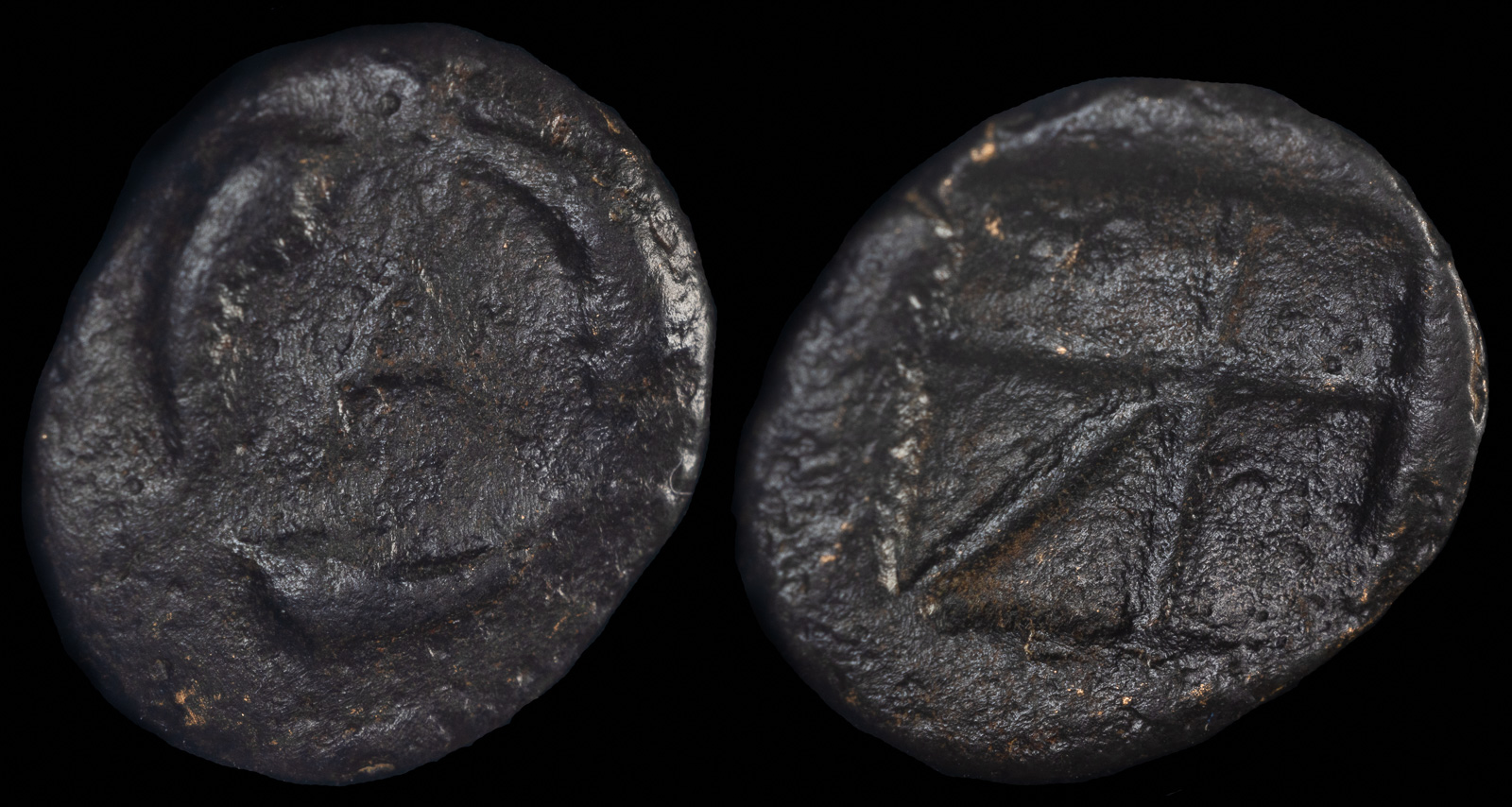
Aegina, Islands off Attica
ca. 370-350 BCE
Ae 12.1mm 2.2g
Obv: Two dolphin swimming upward, stellate pattern between
Rev: Incuse square of skew pattern
SNG Cop. 533
The coinage of Aegina presented me with an interesting problem. Of course, the famous coins were the staters containing turtles, and were themselves a standard of currency that rivaled the Athenian owls. Initially they depicted sea turtles, until Aegina was defeated by Athens and they switched to a land tortoise. To this day we’re still not sure why, but presumably Athens stipulated they couldn’t mint any more sea turtle coins, so they switched to the tortoise.
However, all that occurred long before the period of Philip II and Alexander the Great. I wanted a 4th century representation, and those were primarily bronzes. That worked out much better in a way since these bronzes are a lot cheaper, though somewhat rarer.
There are several different issues of the bronzes. All have the two dolphins on the obverse, but some contain various letters within the grid on the reverse. Because I find the city so intriguing and the bronzes weren’t expensive, I have two samples. The one with the letters N-O is considerably rarer and I was able to find only one other example.

Aegina, Islands of Attica
ca 360-350 BCE
AE 11.7mm 2.0g
Obv: Two dolphins swimming upward, A between
Rev: Skew pattern with five incluse sections, N-O within upper two sections
Sear 2611
This one has three dolphins, and of course I found it impossible to ignore a coin with a full three dolphins.

Islands off Attica, Aegina
Circa 350-338 BCE
AE 15 mm, 1.84 g, 3 h
A surrounded by three dolphins swimming clockwise.
Rev. Incuse square with thin skew device; A in one compartment.
HGC 6, 460 var. (no letter on the reverse). Milbank p. 44, a
By this time Aegina was a shadow of its former self. Most of those who had fought and, at times, won against Athens had been extirpated. Athens did a fairly good job at massacring them – first removing them from their island to the mainland, then stopping by to kill most of them.
A synagogue from the 4th century CE may still be seen on the island, along with its well know temple from the 5th century BCE. The island itself can be seen in a day trip from Athens since it’s only a ferry ride away. I considered seeing it on a Greek trip, but just couldn’t fit the time so I’ll have to visit it another day.
Aegina and Thebes give “earth and water” to the Persians under Darius I.
Temple of Aphaia completed at Aegina.
August 7
September 26
Aegina plays a significant role in the Greek naval victory against the Persian Empire in the Battle of Salamis. Byblos, Arados, Tyre, Halikarnassos under Artemisia, Kos, and Sidon support Darius. Chalkis and Kythnos support the Greek effort. Alexander I serves as a peace negotiator on behalf of the Persians.
459 BCE
Athens lays siege to Aegina as part of the Peloponnesian War.
Peloponnesian War ends in an Athenian surrender, and as a result Adramytteion is ruled by Mytilene. Residents of Aegina are allowed to return to their island.
The Achaean League takes control of Aegina, but it is soon captured by Rome.
210 BCE
Aegina is briefly occupied by Aetolians.
During the First Mithridatic War, the Roman general Sulla sacks Aegina as he attempts to defeat Mithridates VI of Pontus.
Aegina is damaged in raids by Goths.